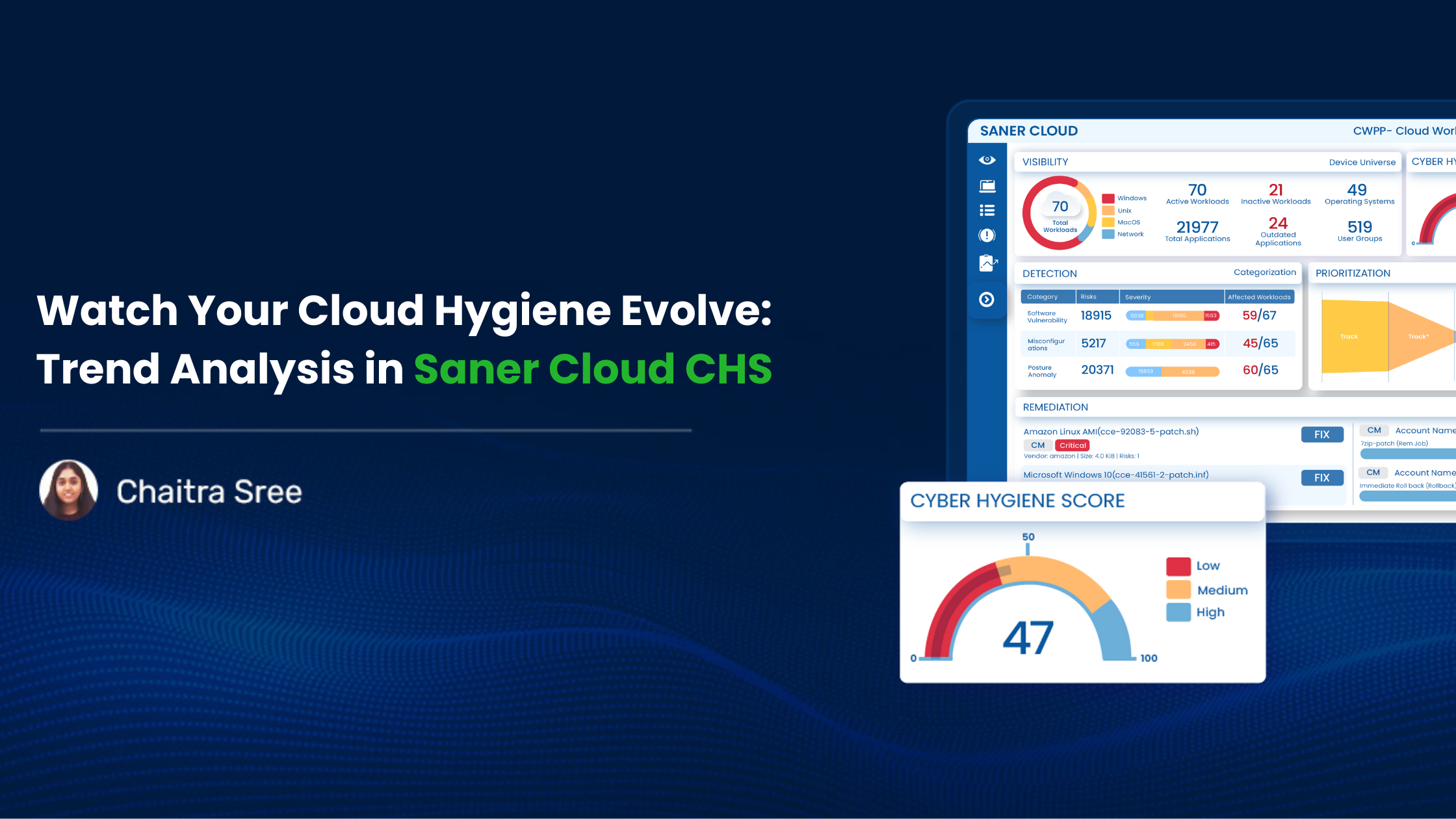Cloud environments are dynamic!
New resources are spun up in seconds, configurations change constantly, and threats evolve even faster. In such a complex landscape, cloud security hygiene isn’t a one-time check, but a continuous journey. To help organizations track this journey, Saner Cloud introduces Trend Analysis within the Cloud Cyber Hygiene Scoring (CCHS) framework, a powerful way to visualize how your cloud’s security posture evolves over time.
Why Trend Analysis Matters
Knowing your current hygiene score is valuable but understanding how itchanges is transformative. Trend analysis helps answer critical questions like:
- Are your security efforts paying off?
- Which accounts or providers are improving or declining in hygiene?
- How do recent remediations or new deployments impact your risk posture?
The CHS Trend view lets you analyse your cloud hygiene over customizable timeframes — daily, weekly, or monthly.
At a glance, you can:
- Identify improvement patterns after major security remediations or configuration changes.
- Spot sudden score drops caused by new vulnerabilities or misconfigurations.
- Understand seasonal or operational trends, such as hygiene fluctuations during large deployments or updates.
This temporal view ensures you’re not just reacting to individual score changes, but evaluating your entire cloud environment’s progress over time.
Organization-Level Trends: The Big Picture
At the organization level, the Trend Analysis chart helps you:
- Compare hygiene performance across accounts and cloud providers.
- Analyze overall posture trends to understand whether the organization is moving toward better security hygiene or drifting toward higher risk.
- Correlate hygiene changes with key security initiatives, such as policy rollouts or patch management campaigns.
By visualizing the organization’s risk evolution, leaders can measure the effectiveness of ongoing efforts and prioritize focus areas where hygiene lags.
Account-Level Insights: The Details That Matter
Zoom into the account-level view to explore detailed hygiene trends for specific accounts.
Here, you can:
- View score distributions to identify which areas contribute most to score fluctuations.
- Track module-wise breakdowns (like configurations, vulnerabilities, or compliance) to pinpoint weak spots.
- Monitor individual resources or services showing recurring hygiene issues.
These insights empower security and DevOps teams to take targeted action, whether it’s fixing configuration drifts, tightening IAM controls, or patching critical vulnerabilities.
Visualize and Correlate Risk Over Time
Trend analysis isn’t just about numbers, it’s about visual storytelling. Saner Cloud CHS visually maps score changes alongside key risk indicators, making it easier to correlate events like:
- New misconfigurations detected in a specific region.
- An increase in high-severity vulnerabilities post a recent release.
- Remediation campaigns that successfully improved hygiene scores.
With these correlations, teams can validate whether their mitigation actions are truly effective and adjust strategies accordingly.
Turn Trends into Action
The ultimate goal of CHS Trend Analysis is not just observation, it’s actionable insight.
By understanding how hygiene evolves, you can:
- Prioritize remediation based on long-term risk movement, not just point-in-time data.
- Set realistic hygiene improvement goals for each account or business unit.
- Establish baselines to measure continuous security improvement.
The CHS dashboard bridges visibility and action, ensuring every data point contributes to a more resilient cloud posture.
A Step Toward Continuous Cloud Security
Saner Cloud’s Trend Analysis transforms your hygiene score into a living metric, one that reflects the real-time health and historical resilience of your cloud. By tracking where you’ve been and where you’re heading, you can confidently guide your cloud environments toward stronger, sustained cyber hygiene. Know more about cloud CHS here: https://docs.secpod.com/docs/cloud-cyber-hygiene-scorecchs-user-guide/#Org-CHTrend

